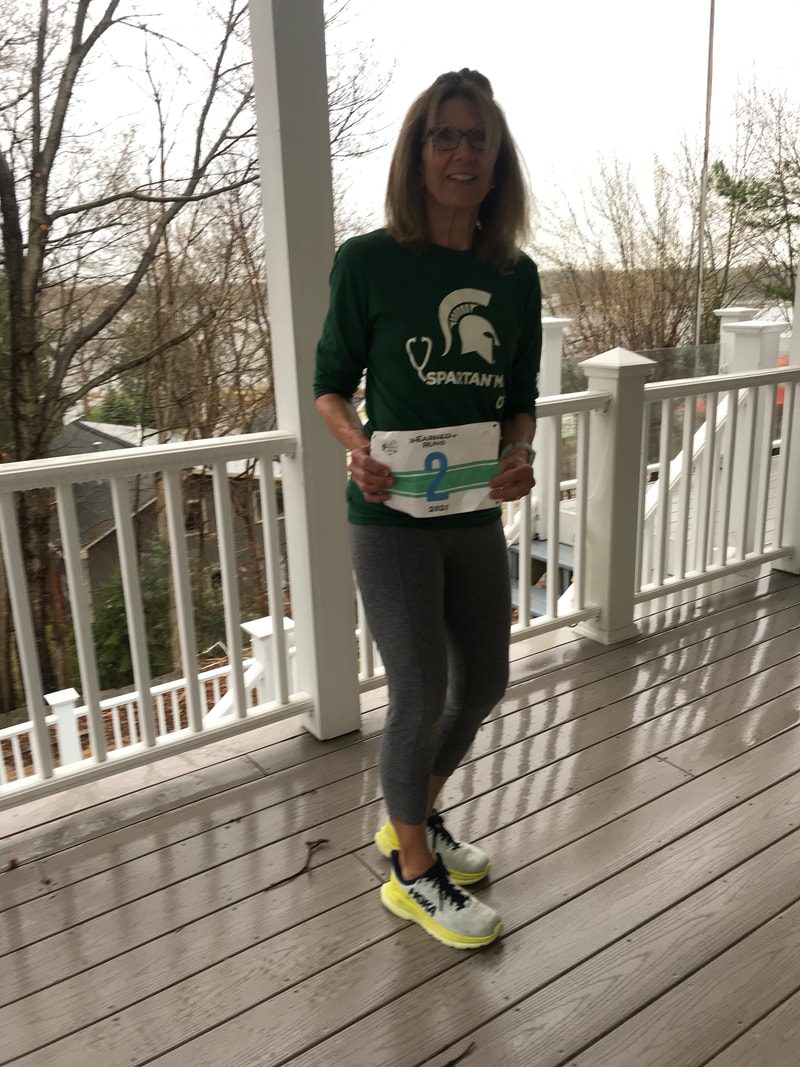BLOG
|
|
RPE= RATING OF PERCEIVED EXERTION Yesterday the BLOG introduced a challenge that some may wish to take up in the weeks after Thanksgiving, leading up to the start of 2018. In the “ON TO THE NEW YEAR” Walker Challenge participants would follow a High Intensity Walking Training protocol on 4 out of 7 days of the week for December 3-9, 10-16, 17 -23, and 24-30.
The protocol involves a warm-up, then at least 5 repetitions of walking 6 minutes (3 minutes, moderate intensity, at level 4 exertion, then 3 minutes, higher intensity at level 7 exertion) FOR A TOTAL OF AT LEAST 30 MINUTES. A cool-down walk would follow the 30 minute HIWT session. What does level 4 versus level 7 exertion feel like? Paige Waehner does a nice job of explaining the Rating of Perceived Exertion (RPE) in her article, “Perceived Exertion Scale: RPE Levels to Estimate Your Exercise Intensity” for verywell.com. What I especially like about Waehner’s piece is that it informs readers that the more current, frequently used 1-10 scale that she provides is based on a standard developed by Gunnar Borg*, reported in the journal Medicine and Science in Sports in 1973, to which she provides a link. To avoid stealing Waehner's work, the details won’t be given here. It’s well worth your time to read her full article if you need help in this area. A very rough summary of the 1-10 scale would group Levels 1-3 as comfortable, Levels 4 -5 as feeling good, working up a sweat, but still being able to talk easily, Levels 6-7 as having a bit of difficulty talking, and Levels 8-10 as more difficult without the possibility of talking. Waehner also gives basic guidelines for using the 1-10 RPE Scale to monitor training; “for most workouts you want to be at around Level 5-6. If you're doing interval training, you want your recovery to be around a 4-5 and your intensity blasts to be at around 8-9. Working at a level 10 isn't recommended for most workouts. For longer, slower workouts, keep your RPE at Level 5 or lower.” [Her article has very general tips on how to correlate perceived exertion with heart rate; for more in-depth discussion using the Borg scale, see below, The Walking Site.] The Walking Site posted more specific information about identifying and using “target” heart rates (HR) for training: - Usual method: posted on fitness equipment and gym bulletin boards to obtain a Maximum Heart Rate, instructs exercisers to calculate “220 minus your age”.. It’s not very accurate. - Greater accuracy: there’s a link to a piece that outlines the Karvonen Formula, which is based on an individual ‘s own resting heart rate. The most accurate HR calculation, the piece says, requires a stress test. - Training Zones*: Most helpful is a section that describes the percent maximum heart rate ranges for various types of training: warm up (50-60%), fat burning (60-70%, endurance (70-80%), performance (80-90%), and maximum (90-100%). - DIY section: instructs how to measure your own HR without a HR monitor. - The Borg RPE Scale (ranges from 6 to 20) is explained. It describes the exerciser’s perception only at 'odd number' levels. There’s more detail in the article to help with understanding, but the following roughly summarizes the scale: 7 (extremely light exertion); 9 (very light exertion); 11 (light); 13 (somewhat hard); 15 (hard); 17 (very hard); 19 (extremely hard); 20 (maximal). - Correlating Borg Scale RPE with HR: according to Borg's published paper, the actual heart rate while exercising can be estimated by multiplying the Borg RPE number by 10. “A high correlation exists between a person's perceived exertion rating times 10 and the actual heart rate during physical activity; so a person's exertion rating may provide a fairly good estimate of the actual heart rate during activity (Borg, 1998). For example, if a person's rating of perceived exertion (RPE) is 12, then 12 x 10 = 120; so the heart rate should be approximately 120 beats per minute. Note that this calculation is only an approximation of heart rate, and the actual heart rate can vary quite a bit depending on age and physical condition. The Borg Rating of Perceived Exertion is also the preferred method to assess intensity among those individuals who take medications that affect heart rate or pulse.
MY ESTIMATION OF WALKING AT LEVELS 4 AND 7 on the 1-10 RPE Scale, translated to the Borg RPE scale would be 11 (for level 4) and 13 (for level 7). Thus, my estimated heart rate would be 110 and 130 beats per minute. I hope to check it with a heart rate monitor soon to see if the correlation works for me. If you’re thinking of taking on the “ON TO THE NEW YEAR” 2017-18 Walker Challenge, these two pieces may help you estimate level 4 and level 7 effort by the 1-10 RPE Scale, and correlate that effort with your heart rate, without using a wearable monitor. RUN HAPPY! *The Orange Theory Fitness Centers base their exercise routines on slight modifications of these ranges. The OTF website describes work performed in Zone 4 (of their 5 zones) as providing the “Orange Effect/Afterburn”, which translates to 84-91% maximum HR effort, for at least 12 minutes within a full hour. https://www.verywell.com/perceived-exertion-scale-1231117 http://www.thewalkingsite.com/thr.html
0 Comments
Your comment will be posted after it is approved.
Leave a Reply. |
BRIDGE TO PHYSICAL SELF
Running, walking, and fitness activities enable us to experience our physical selves in a world mostly accessed through use of fingers on a mobile device. AuthorEARNED RUNS is edited and authored by me, runner and founder. In 1978 I began participating in 10K road races before 5Ks were common. I've been a dietitian, practiced and taught clinical pathology, and been involved with research that utilized pathology. I am fascinated with understanding the origins of disease as well as health and longevity. Archives
November 2023
CategoriesNew! Search Box
Earned Runs is now searchable! Check it out...
|


 RSS Feed
RSS Feed